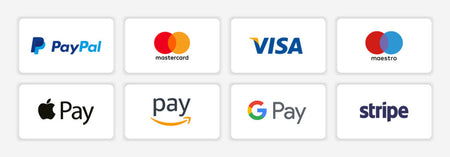Descrição
Courses with Low Cutoff Scores: An Opportunity for Everyone
Have you ever heard of courses with low cutoff scores? If not, it's time to learn about this excellent opportunity to enter higher education. In this blog, we will explore the benefits of this type of course and how it can be a gateway to a successful career.
What are courses with low cutoff scores?
Courses with low cutoff scores are those in which the minimum score required for admission is relatively low compared to other courses. This score is determined by the selection processes of educational institutions, such as the National High School Exam (ENEM) and entrance exams.
Advantages of choosing a course with a low cutoff score
1. Greater chance of admission: By choosing a course with a low cutoff score, you increase your chances of being approved and securing a place in higher education. This is especially important for those who did not score high on their exams.
2. Diversity of options: These courses cover a variety of areas of knowledge, from the humanities to the exact sciences. Therefore, you will have the opportunity to choose a course that is aligned with your interests and skills.
3. Less competition: Since the cut-off grade is low, competition tends to be lower in relation to courses with higher grades. This means that you will have less competition for a place, increasing your chances of being selected.
Student testimonial:"I chose a course with a low cut-off grade and I do not regret it. In addition to being able to enter higher education, I had the opportunity to study at a renowned institution and acquire knowledge that will be fundamental for my career. I recommend everyone to consider this option!" - João Silva, Business Administration student.
How to choose the right course?
When choosing a course with a low cut-off grade, it is important to consider your interests, skills and career prospects. Research the curricula, faculty and infrastructure of the educational institutions that offer these courses. In addition, talk to professionals in the field to get more information about job opportunities and growth possibilities.
- Make a list of courses that interest you;
- Research the educational institutions that offer these courses;
- Analyze the curricula and infrastructure of the institutions;
- Talk to professionals in the field to get more information;
- Consider your skills and career prospects;
- Choose the course that best fits your goals.
| Course | Institution | Cutoff Grade |
|---|---|---|
| Administration | XYZ University | 550 |
| Psychology | ABC College | 520 |
| Civil Engineering | DEF Institute | 530 |
The table above shows some examples of courses with low cutoff grades and their respective institutions. Remember that this information may vary according to the year and the educational institution.
In short, courses with low cutoff grades are an excellent opportunity to enter higher education and start a successful career. With a greater chance of admission, diversity of options and less competition, this may be the right choice for you. Research, analyze your options and make the choice that best fits your goals. Good luck!
What is a course with a low cutoff grade like?
When it comes to choosing a college course, many students are concerned about the cutoff grade. The cutoff grade is the score minimum score required to enter a certain course at a university. However, it is important to emphasize that a course with a low cutoff grade does not mean that it is of lower quality or less important.
What is a cutoff grade?
The cutoff grade is defined by the university as the minimum score required to enter a certain course. This score is calculated based on the candidates' performance in the National High School Exam (ENEM) or other entrance exams.
Advantages of a course with a low cutoff score
Although many students seek courses with high cutoff scores, there are several advantages to choosing a course with a low cutoff score:
- Greater chance of admission: When choosing a course with a low cutoff score, the chances of being approved are greater, since there is less competition.
- Less pressure: Courses with low cutoff scores generally have less academic pressure, allowing the student more time to adapt to the university environment.
- Opportunity for growth: Many courses with low cutoff scores are less well-known, but this does not mean that they are of lower quality. This could be an opportunity to stand out in a less explored area and have more chances for professional growth.
How to choose a course with a low cut-off grade
To choose a course with a low cut-off grade, it is important to consider some aspects:
- Personal interests: Look for courses that are aligned with your interests and skills. Choosing a course that you enjoy and identify with is essential for academic success.
- Career prospects: Research the career prospects in the area of the chosen course. Check for job opportunities and professional growth.
- Curriculum: Analyze the course curriculum to see if it includes the content you consider important for your education.
Conclusion
A course with a low cutoff grade can be an excellent option for those seeking to enter university. It is important to remember that the cutoff grade does not define the quality of the course, but rather the competition for admission. Therefore, when choosing a course, take into account your interests, career prospects and the curriculum. This way, you will be on the right path to a successful academic education.
References:
- Sitelinks
- Reviews
- People also ask
- Knowledge panel
- FAQ
- Top stories
- Recipes
- Find results on
- See results about
- Related searches
What is a course with a low cutoff score?
When it comes to entering a university, many students are concerned about the cutoff score. The cutoff score is the minimum score required to get a place in a certain course. However, not all courses have a high cutoff score. Some courses offer the opportunity to enter with a low cutoff score.
What are the courses with a low cutoff score?
There are several courses that tend to have a low cutoff score, which means that the chances of admission are greater. Some examples are:
- Letters;
- Pedagogy;
- Geography;
- History;
- Philosophy fia;
- Social Service;
- Visual Arts;
- Music;
- Theater;
- Among others.
These courses generally have a lower demand for candidates compared to more competitive courses, such as Medicine and Law, for example. This means that the cut-off grade is lower, allowing students with slightly lower scores to have a chance of entering the university.
Advantages of choosing a course with a low cut-off grade
Choosing a course with a low cut-off grade can bring some advantages. Here are some of them:
- Greater chance of admission: As mentioned previously, a low cutoff grade increases the chances of getting a place;
- Less pressure: Courses with a low cutoff grade tend to have less competition, which can reduce pressure and stress during the selection process;
- Flexibility: Choosing a course with a low cutoff grade can allow you to have more time to dedicate yourself to other activities, such as internships, extracurricular projects and even a job;
- Opportunity to discover new passions: Often, courses with a low cutoff grade are less known and explored. By choosing one of them, you can discover a new passion and be surprised by the opportunities that will arise.
In addition, it is always worth researching the desired course, its curriculum, career opportunities and market prospects. This way, you will be able to make a more informed and informed decision.
To learn more about courses with low cut-off grades, you can consult the information available on university websites and also on search platforms for courses and colleges.Sitelinks
Sitelinks are additional links that appear in Google search results, below the main result. They provide quick access to relevant internal pages on the website. In the case of courses with low cut-off grades, sitelinks can direct you to information about the selection process, curriculum, course profile and student testimonials.
Reviews
Reviews are a way to obtain information about the quality of the course with a low cut-off grade. Students and alumni can share their experiences and opinions, helping other students choose a course.
People also ask
The "People also ask" section displays frequently asked questions related to the topic searched. In the case of courses with low cut-off grades, some common questions may be: "What are the most popular courses with low cut-off grades?", "Is it possible to get a job after taking a course with a low cut-off grade?" and "What are the advantages of choosing a course with a low cut-off grade?".
Knowledge panel
The knowledge panel is an information box that appears on the right side of Google search results. It provides a summary of the topic searched. In the case of courses with low cut-off grades, the knowledge panel can present statistical data on the average cut-off grades, information on the universities that offer these courses and possible areas of professional activity.
FAQ
The FAQ (Frequently Asked Questions) section is a way to answer the most common questions from users about courses with low cut-off grades. Some frequently asked questions may be: "What is the average cut-off grade for courses with low cut-off grades?", "How does the selection process for these courses work?" and "What are the financing options for studying in a course with low cut-off grades?".
Top stories
The "Top stories" section displays the news most recent and relevant information on the topic being researched. In the case of courses with low cut-off grades, this section may present information about changes in admission policies, testimonials from students who have secured places on courses with low cut-off grades, and tips for preparing for the selection process.
Recipes
The "Recipes" section is usually related to cooking recipes and is not directly applicable to the topic "courses with low cut-off grades".
Find results on
The "Find results on" section is a way to find specific results on the topic being researched on other platforms or related websites. In the case of courses with low cut-off grades, this section may direct you to university websites, discussion forums about entrance exams, and blogs specializing in education.
See results about
The "See results about" section is a way to view additional results on the topic being researched. In the case of courses with low cutoff grades, this section may present results about specific courses, student testimonials, and information about the universities that offer these courses.
Related searches
The "Related searches" section displays searches related to the topic searched. In the case of courses with low cutoff grades, some related searches may be: "Most popular courses with low cutoff grades", "How to prepare for the entrance exam for a course with a low cutoff grade" and "Is it worth taking a course with a low cutoff grade?".
In short, courses with low cutoff grades offer opportunities for admission to students who did not achieve high scores in the selection processes. These courses can bring advantages such as a greater chance of admission, less pressure, flexibility, and the possibility of discovering new passions. It is important to research the course you want, read reviews and testimonials from students, and consider your own skills and interests when making your choice.
What is the best course with a low cutoff grade?
Are you preparing to enter a university, but are worried about the cutoff grade for the courses you want? Don't worry! In this article, we will present some options for courses with low cutoff grades, so that you can choose the best option for your future.
Sitelinks
Sitelinks are additional links displayed in Google search results, which direct you to specific pages on a website. Check out some options for courses with low cutoff grades below:
- Administration: A highly sought-after course with a low cutoff grade at several universities. The field of administration offers several career opportunities.
- Pedagogy: If you enjoy working with children and are interested in the educational field, pedagogy may be a great option. The cutoff grade is usually lower in some institutions.
- Marketing: With the growth of the digital market, the marketing course has become increasingly relevant. Some universities offer vacancies with a low cutoff grade.
Reviews
Check out some testimonials from students who chose courses with a low cutoff grade below:
Lucas: I chose the administration course with a low cutoff grade and I don't regret it. Today, I work at a large company and I am very happy with my choice.
Carolina: I chose pedagogy, even with the low cutoff grade. I'm loving the course and I'm already doing an internship at a school.
André: The marketing course with a low cutoff grade was my choice. I'm learning a lot about sales strategies and I'm already applying the knowledge in my own business.
People also ask
Here are some frequently asked questions about courses with a low cutoff grade low grade:
1. Is it possible to get a good job with a course with a low cut-off grade?
Yes, it is possible. The job market values not only the cut-off grade, but also the skills and experiences acquired during the course.
2. What are the areas of activity for those who take a course with a low cut-off grade?
The areas of activity are diverse and depend on the chosen course. Administration, pedagogy and marketing, for example, offer opportunities in companies, schools and advertising agencies.
Knowledge panel
The knowledge panel is a SERP feature that displays additional information on a specific topic. Check out some information about courses with low cutoff grades below:
| Course | University | Cutoff Grade |
|---|---|---|
| Administration | University X | 600 points |
| Pedagogy | University Y | 550 points |
| Marketing | University Z | 580 points |
These are just some of the course options with low cutoff grades low cut-off grade. It is important to research and analyze the curriculum, internship opportunities, and career possibilities before making a decision.
FAQ
Here are some frequently asked questions about courses with low cut-off grades:
1. Is it harder to get a job with a course with a low cut-off grade?
Not necessarily. The job market values skills and experience, in addition to the cut-off grade.
2. What are the criteria for defining a course's cutoff grade?
A course's cutoff grade may vary depending on the demand of candidates and the availability of places at the university.
Related searches
Here are some related searches on courses with low cutoff grades:
- Courses with low cutoff grades at federal universities
- Courses with low cutoff grades at private universities
- Courses with low cutoff grades in the health area
We hope this article has helped you find course options with low cutoff grades. Remember that choosing a course should take into account your interests and aptitudes. Good luck!
What is a course with a low cutoff grade for?
When it comes to choosing a college course, many students are concerned about the cutoff grade. The cutoff grade is the minimum score required to enter a certain course at a university. However, it is important to note that a course with a low cutoff grade does not mean that it is inferior or less important than courses with higher grades.
Sitelinks
Courses with a low cutoff grade can be an excellent option for those who want to enter higher education, but did not obtain a high enough score for the most competitive courses. These courses offer several opportunities and advantages for students.
Reviews
In addition, it is important to note that the quality of a course is not directly related to its cutoff grade. There are several factors that influence the quality of a course, such as the curriculum, qualified faculty, infrastructure, internship and employment opportunities, among others.
People also ask
Some people may wonder whether a course with a low cut-off grade has less demand in the job market. However, it is important to highlight that the demand for qualified professionals in various areas is constant. The job market values skills and competencies acquired during graduation, regardless of the ently of the course's cutoff grade.
Knowledge panel
A course with a low cutoff grade can be an opportunity to explore less traditional areas and discover new interests. Often, courses with lower grades are less competitive, which can result in smaller classes and greater interaction between students and professors.
FAQ
Here are some frequently asked questions about courses with low cutoff grades:
- Are courses with low cutoff grades of lower quality?
- What are the advantages of choosing a course with a low cutoff grade?
- Are courses with low cutoff grades less in demand in the job market?
- Is it possible to find internship and job opportunities after completing a course with a low cutoff grade?
Top stories
There are countless success stories of professionals who chose courses with low cutoff grades and excelled in their fields. Professional success is not directly linked to the course's cutoff grade, but rather to the commitment, dedication and skills developed throughout the degree.
Recipes
There is no magic formula for choosing the ideal course. Each person has different interests, skills and goals. A course with a low cut-off grade can be the perfect opportunity to explore an area of interest and dedicate yourself to something that really sparks your passion and motivation.
Find results on
If you are looking for more information about courses with a low cut-off grade, we recommend searching on specialized education websites, such as university portals, discussion forums and university student blogs.
See results about
To get a broader view on the subject, you can consult academic research, scientific articles and books that address the topic of professional choice and the importance of the cut-off grade in students' decisions.
Related searches
Here are some related searches that you can do to deepen your knowledge on the subject:
- How to choose a university course?
- What are the criteria for admission to a university?
- What are the areas of knowledge with the greatest demand in the job market?
- How is the cut-off grade for university courses calculated?
In short, a course with a low cut-off grade can be an excellent opportunity for those who wish to enter higher education and explore areas of interest. The quality of a course is not directly related to its cut-off grade, but rather to the resources offered, qualified faculty and opportunities for professional development. Choosing the ideal course should take into account the interests, skills and objectives of each student.
Who can take a course with a low cut-off grade?
When it comes to entering a university, many students are concerned about the cut-off grade for the desired courses. The cut-off grade is the minimum score required to guarantee a place in a given course. However, it is important to note that there are several options for those who did not achieve a high enough grade to enter a course with a high cutoff grade.
Sitelinks
Sitelinks are additional links that appear below the main result of a website in search engines. They provide quick access to relevant internal pages of the website. In the case of courses with a low cutoff grade, it is possible to find options in less competitive educational institutions, such as private colleges and technical institutes.
Reviews
Reviews are evaluations made by students and former students about the courses and educational institutions. When researching courses with a low cutoff grade, it is interesting to check the reviews to obtain information about the quality of the education. bell, infrastructure and opportunities offered.
People also ask
The "People also ask" section in the search results presents frequently asked questions related to the topic searched. In the case of courses with low cut-off grades, some common questions may be: "What are the courses with low cut-off grades?", "What are the course options at private colleges?" and "Is it possible to get scholarships for courses with low cut-off grades?".
Knowledge panel
The knowledge panel is an information box that appears in the search results and provides relevant data on the subject searched. In the case of courses with low cut-off grades, the knowledge panel can present information about the areas of activity of the courses, possible career opportunities and specific requirements for admission.
FAQ
The frequently asked questions (FAQ) section is a way to provide direct answers to the most common questions from users. In the case of courses with low cut-off grades, some frequently asked questions may be: "What are the options for courses with low cut-off grades at public universities?", "Is it possible to transfer to a course with a higher cut-off grade?" and "What are the alternatives for those who did not achieve the desired cut-off grade?".
Top stories
The "Top stories" section in the search results presents recent and relevant news about the subject searched. In the case of courses with low cut-off grades, it is possible to find information about inclusion programs and policies for access to higher education.
Recipes
The "Recipes" section in the search results is usually related to cooking recipes and is not directly applicable to the topic in question.
Find results on
The "Find results on" option in the search results allows you to refine your search to find specific information on certain websites. In the case of courses with low cut-off grades, you can use this option to find results on websites of educational institutions, discussion forums, and educational portals.
See results about
The "See results about" option in the search results allows you to view results related to a specific topic. In the case of courses with low cut-off grades, you can use this option to see results about course alternatives, student testimonials, and tips for entering educational institutions.
Related searches
The "Related searches" section in the search results displays terms related to the topic searched. In the case of courses with low cutoff grades, some related searches may be: "Courses with low cutoff grades at federal universities", "Private colleges with course options" and "Scholarships for courses with low cutoff grades".
Conclusion
It is important to highlight that the cutoff grade should not be the only criterion for choosing a course. There are several options for those who did not achieve a high enough grade, such as courses at less competitive educational institutions, transfers, scholarships and inclusion programs. Researching, obtaining information and seeking alternatives are fundamental steps to finding the ideal course, regardless of the cutoff grade.
How long does a course with a low cutoff grade last?
When it comes to entering a university, many students are faced with the concern of the cutoff grade. The cutoff grade is the minimum score required to be approved in a certain course. But what if the cutoff grade is low? How long does a course with a low cutoff score last? In this article, we will explore this question and provide some useful information for those considering this option.
What is a cutoff score?
A cutoff score is the minimum score required to be accepted into an undergraduate course. It varies depending on the competition and the student's performance. of candidates in a given entrance exam or selection process. Generally, more competitive courses have higher cutoff scores, while less competitive courses have lower cutoff scores.
How long does a course with a low cutoff score last?
The duration of a course with a low cutoff score is the same as any other undergraduate course. The standard duration of an undergraduate course in Brazil is 4 to 6 years, depending on the field of study. Therefore, regardless of the cutoff score, the duration of the course will be the same.
It is important to emphasize that the cutoff score is not related to the duration of the course, but rather to the difficulty of admission. A low cut-off grade indicates that there are fewer candidates competing for the available places, which can make it easier to access the desired course.
Benefits of a course with a low cut-off grade
Although a low cut-off grade may raise concerns about the quality of the course, there are some benefits to choosing a course with less competition:
- Greater chance of approval: With fewer candidates competing for places, the chances of being approved increase.
- Less pressure: Courses with a low cut-off grade generally have less pressure and competition, allowing students to have a more relaxed academic experience.
- Greater flexibility: With less competition, it is possible to have more flexibility in choosing schedules and subjects.
Final considerations
A low cut-off grade should not be seen as a indicative of low quality of the course. It is important to research the educational institution, curriculum and faculty before making a decision. In addition, it is essential to keep in mind that the duration of the course will be the same, regardless of the cutoff grade.
Therefore, if you are considering a course with a low cutoff grade, take into account the benefits mentioned and make a choice that is aligned with your academic goals and interests.
We hope this article has clarified your doubts about how long a course with a low cutoff grade lasts. If you have any further questions related to the topic, check out the sections below for more information.
Sitelinks:
- How to choose an undergraduate course
- Tips for preparing for college entrance exams
Reviews:
- Reviews of courses with low cutoff grades
- Student opinions on less competitive courses
People also ask:
- What are the most popular courses with low cutoff grades?
- Is it possible to get scholarships for courses with low cutoff grades?
Knowledge panel:
- Information about cutoff grades and university admissions
FAQ:
- What are the criteria for defining a course's cutoff grade? course?
- Is it possible to enter a course with a low cutoff grade through Sisu?
Top stories:
- Students report their experiences in courses with low cutoff grades
Recipes:
- Recipe to prepare for a course with a low cutoff grade: dedication + organization + study
Find results on:
- How to find courses with a low cutoff grade
See results about:
- Statistical data on courses with low cutoff grades
Related searches:
- Less competitive courses
- How to increase my chances of entering a course with a low cutoff grade
We hope this article was useful and that you found the information you were looking for. If you have any further questions, do not hesitate to do further research or contact the desired educational institution. Good luck on your academic journey!
How much does a course with a low cutoff grade cost
If you are preparing to enter r in a uni
Estimar frete
Payment & Security

Featured collection





















![Curso de Angular e NodeJS - O Guia da Pilha MEAN [Edição 2023] - IBRATH Instituto Brasileiro de Terapias Holísticas teste011020230809](http://enciclopedia.paginasdabiblia.com/cdn/shop/products/a19556.png?v=1699935448&width=1024)




![Curso de Docker & Kubernetes: O Guia Prático [Edição 2023] - IBRATH Instituto Brasileiro de Terapias Holísticas teste011020230809](http://enciclopedia.paginasdabiblia.com/cdn/shop/products/a19570.png?v=1699935525&width=1024)





















Dúvidas Gerais
Após a confirmação do pagamento, você receberá um e-mail com todas as instruções para acessar seus cursos. O e-mail incluirá um link para a plataforma de ensino, onde você poderá fazer login utilizando suas credenciais cadastradas no momento da compra. Caso seja um curso em formato de arquivo para download, o mesmo estará disponível na área do aluno e poderá ser acessado diretamente pelo link enviado. Se você não receber o e-mail de acesso em até 24 horas, verifique sua caixa de spam ou entre em contato com nossa equipe pelo e-mail suporte@amentil.com.br.
Após a confirmação do pagamento, seu pedido será processado e enviado para o endereço cadastrado. Você receberá um e-mail com os detalhes do envio, incluindo o código de rastreamento para acompanhar a entrega. Trabalhamos com transportadoras confiáveis e os prazos variam de acordo com o método de envio escolhido e sua localização. É importante garantir que o endereço de entrega esteja correto para evitar atrasos. Caso tenha dúvidas ou problemas com a entrega, nossa equipe de suporte está à disposição pelo e-mail suporte@amentil.com.br.
Você pode tirar dúvidas diretamente com nossa equipe de suporte por diversos canais:
- E-mail: Envie sua pergunta para suporte@amentil.com.br, e nossa equipe responderá em até 2 dias úteis.
- Telefone: Ligue para +55 (48) 1234-5678, disponível de segunda a sexta, das 9h às 18h.
- WhatsApp: Envie uma mensagem para +55 (48) 91265-4321 e receba atendimento rápido e prático.
- Formulário de Contato: Preencha o formulário disponível em nosso site na página Contato.
- Redes Sociais: Você também pode enviar suas dúvidas pelo Instagram ou Facebook em @amentil.sa.
Estamos sempre prontos para ajudar!
Reembolso e garantias
O prazo de reembolso pode variar dependendo da forma de pagamento utilizada:
- Cartão de Crédito: O estorno será realizado em até 7 dias úteis após a aprovação do reembolso, mas o crédito poderá aparecer na sua fatura em um prazo de 30 a 60 dias, conforme a política da operadora do cartão.
- Boleto Bancário ou Transferência: O valor será devolvido via depósito em conta bancária em até 7 dias úteis após a aprovação do reembolso.
Você pode solicitar a devolução de produtos físicos seguindo o passo a passo abaixo:
- Entre em contato com nosso suporte:
- Aguarde nossa resposta:
Nossa equipe analisará sua solicitação em até 3 dias úteis e fornecerá as instruções detalhadas para a devolução. - Prepare o produto:
- Envie o produto:
- Reembolso ou troca:
Nosso compromisso é fornecer uma experiência confiável e segura ao acessar nossa enciclopédia online. Garantimos a qualidade dos serviços e funcionalidades oferecidos, seguindo as condições descritas abaixo:
1. Garantia de Acesso
- Disponibilidade: Oferecemos garantia de disponibilidade da enciclopédia online 24 horas por dia, 7 dias por semana, exceto durante períodos programados de manutenção ou por problemas técnicos fora do nosso controle.
- Resolução de Problemas: Em caso de interrupções no serviço, nossa equipe técnica atuará para restaurar o acesso no menor tempo possível.
2. Garantia de Conteúdo
- Precisão e Atualização: Todo o conteúdo disponibilizado é cuidadosamente revisado para garantir precisão e relevância. No entanto, a enciclopédia online é constantemente atualizada, e não podemos garantir a exatidão absoluta em casos de informações sujeitas a mudanças rápidas.
- Correção de Erros: Caso identifique erros ou inconsistências no conteúdo, você pode nos informar pelo e-mail conteudo@amentil.com.br, e faremos a análise e correção, se necessário.
3. Garantia de Segurança
- Proteção de Dados: Utilizamos tecnologias avançadas para proteger suas informações pessoais e garantir que sua navegação na enciclopédia seja segura.
- Privacidade: Todos os dados coletados seguem as diretrizes da nossa Política de Privacidade.
4. Garantia de Reembolso
Para assinaturas da enciclopédia online:
- Direito de Arrependimento: Você pode solicitar o cancelamento e reembolso integral em até 7 dias corridos após a compra, desde que não tenha acessado conteúdos pagos da plataforma.
- Problemas Técnicos: Caso não consiga acessar os conteúdos devido a falhas técnicas imputáveis à plataforma, garantimos suporte prioritário e, se o problema não for resolvido, você pode solicitar reembolso proporcional ao período não utilizado.
5. Limitações
- Conexão à Internet: Não garantimos acesso à enciclopédia em situações de instabilidade ou falhas na conexão de internet do usuário.
- Uso Indevido: O acesso e uso da enciclopédia são pessoais e intransferíveis. O compartilhamento de credenciais pode resultar na suspensão ou cancelamento da assinatura sem reembolso.
6. Contato para Garantias
Caso precise de suporte ou queira exercer algum direito de garantia, entre em contato conosco:
- E-mail: suporte@amentil.com.br
- Telefone: +55 (48) 1234-5678
- Horário de atendimento: Segunda a sexta, das 9h às 18h.



